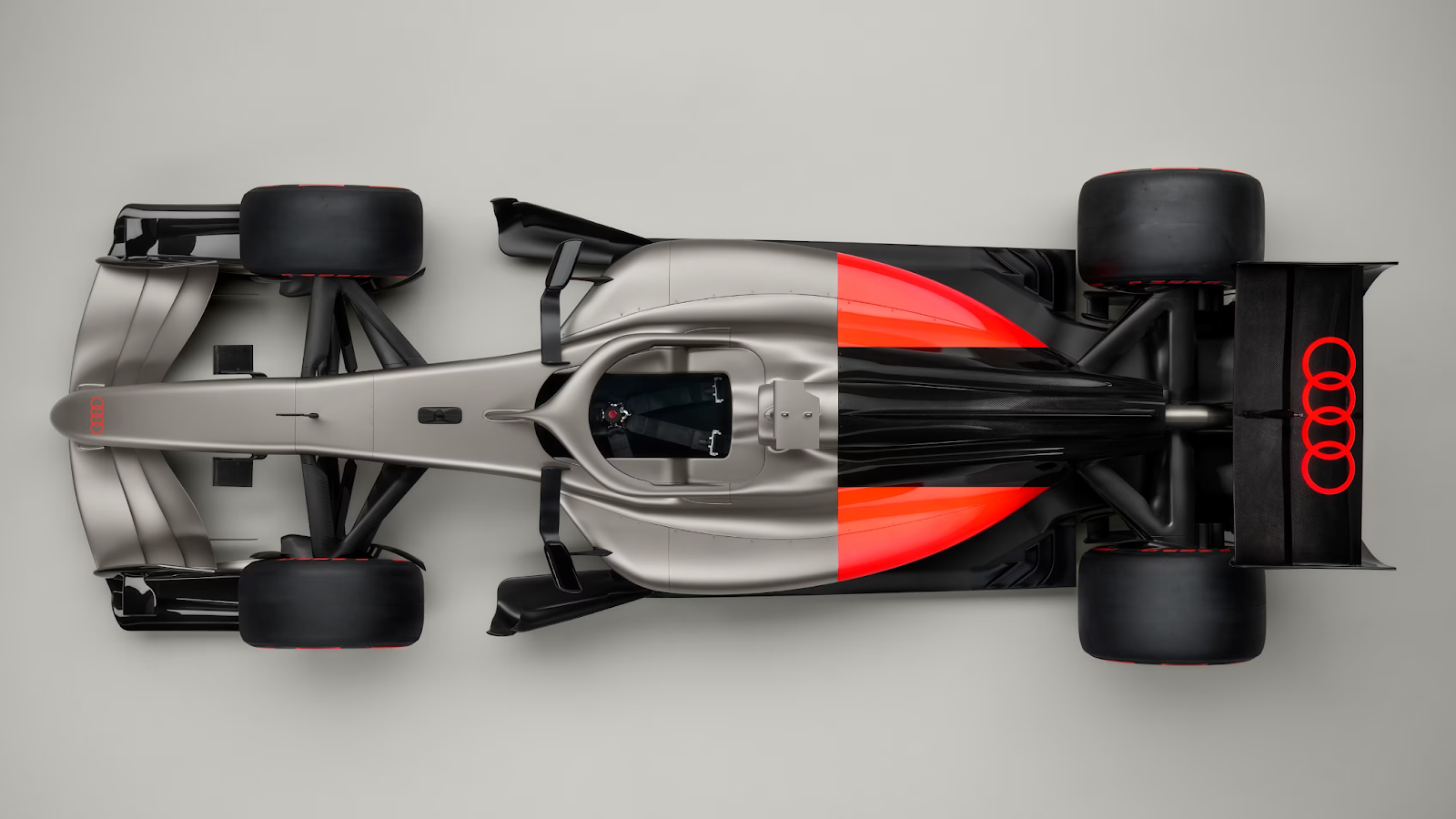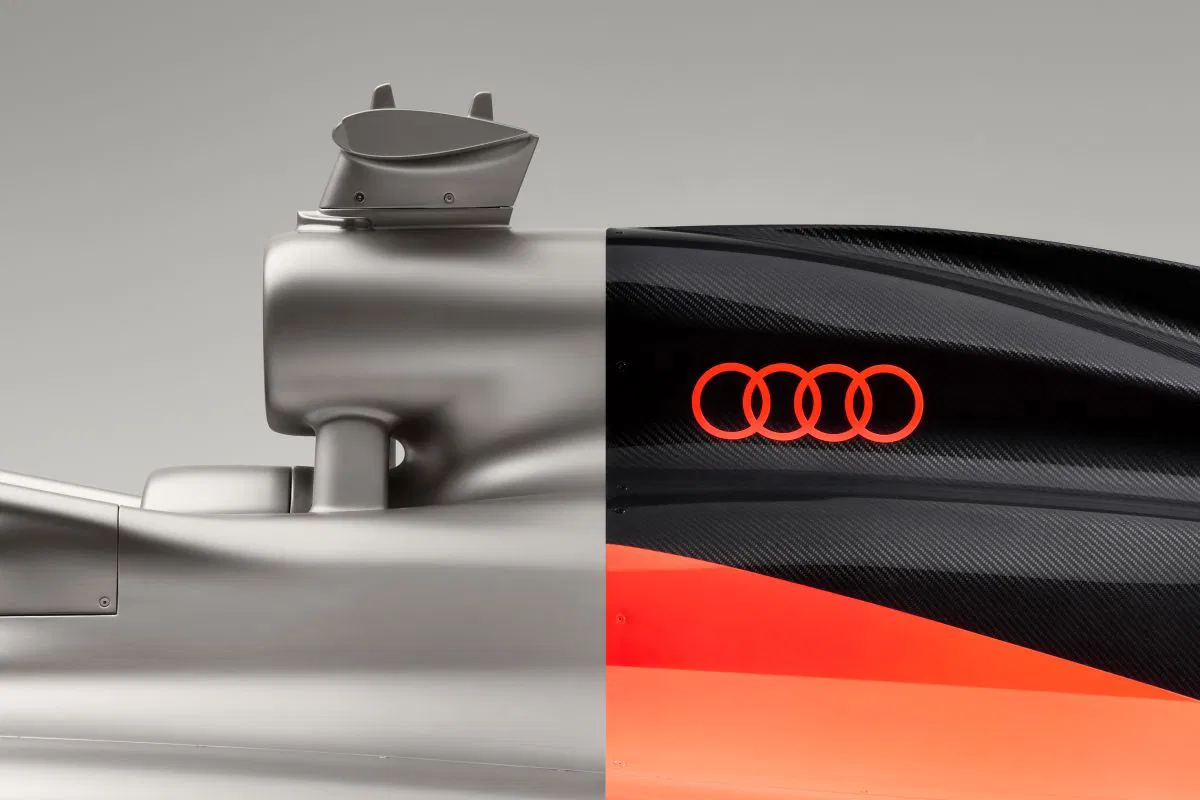Audi’s Formula 1 debut isn’t just racing, it's a global brand reboot
The German automaker is using Formula 1 as a testbed for its next-gen identity and marketing strategy

Audi is entering Formula 1 in 2026, but it’s not just showing up for the competition. The company is using motorsport’s global stage as the launchpad for a full-scale brand reinvention, designed to reach younger audiences, streamline internal processes, and redefine the way Audi tells its story worldwide.

Unveiled at the Audi Brand Experience Center in Munich, the "R26 Concept" wasn’t just about showcasing a futuristic race car. It introduced a fresh design philosophy, bold creative direction, and new visual cues tied to a transformation campaign that will roll out globally by 2026.
This article explores how Audi is using Formula 1 to shift its brand positioning, the strategy behind its design overhaul, and what marketers can learn from the automaker’s high-stakes, high-visibility move.
Short on time?
Here’s a table of contents for quick access:
- Audi’s Formula 1 entry: the spark behind its 2026 rebrand
- Design as strategy: the "R26 Concept" and visual identity shift
- Why F1 is the perfect marketing engine
- What marketers should know

The spark behind its 2026 rebrand
According to Audi ceo Gernot Döllner, the F1 programme is more than a sports initiative. He described it as the next chapter in the company’s renewal. The move is intended to reshape Audi into a leaner, faster, more innovative brand.

The F1 entry aligns with internal shifts already underway, including Audi’s acquisition of the Sauber Group. The team is set to debut publicly in January 2026, begin testing in February, and race for the first time in Melbourne that March.

Formula 1 offers Audi more than a competitive platform. With over 820 million fans and fast-growing youth engagement, the sport provides a global stage for storytelling and repositioning at scale.
The "R26 Concept" and visual identity shift
Audi’s R26 Concept is the first visible proof of its evolving design system. Built around four pillars — clear, technical, intelligent, emotional — the concept features precise geometry, stripped-back surfaces, and a sharp new color scheme focused on titanium, carbon black and Audi red.
Most notably, the brand will reserve its red Audi rings for Formula 1 only, signaling a design choice that is both exclusive and symbolic.
Chief creative officer Massimo Frascella emphasized that F1 serves as a globally visible testbed. He said the design overhaul will unify Audi’s entire ecosystem, from consumer touchpoints to internal communications, under one design language.
Why F1 is the perfect marketing engine
Sport is quickly becoming one of the last sources of real-time, appointment-based viewing. Audi is tapping into that rarity to reset its brand in front of a massive, culturally connected audience.
The Singapore Grand Prix alone generated over 431,000 posts and reposts in 2025, reaching more than 2 billion users. That type of digital footprint makes Formula 1 fertile ground for brands looking to engage through content, fandom and entertainment.
Jürgen Rittersberger, cfo of Audi AG, said the sport’s popularity among younger audiences is key to the strategy. Formula 1 gives Audi the opportunity to attract new customers — especially in younger segments where legacy automakers often struggle for relevance.
Sponsorship deals with adidas, bp and Revolut are already in place, with the latter becoming title partner. Audi’s financial structure is further supported by investment from Qatar’s sovereign wealth fund, solidifying long-term confidence in the project.
What marketers should know
Here’s what Audi’s F1 pivot means for brands watching from the sidelines:
1. Live sport is now a branding platform
Brands like Audi are proving that sport isn’t just a media channel. It’s an ecosystem for content, cultural relevance and long-term brand building.
2. Design isn’t just aesthetics
Audi is using design to drive strategy. Its Formula 1 debut doubles as a large-scale A/B test for a new identity. For marketers, this is a reminder that visual language and brand systems are operational levers, not just creative assets.
3. Speed and clarity win with younger audiences
Today’s fans want clean design, emotionally intelligent messaging and a sense of purpose. Audi’s stripped-down visuals and performance-first tone align well with digital-native expectations.
4. Marketing and internal change must align
Audi is importing Formula 1’s culture of speed and iteration into its operations. The message for marketers: external campaigns will only resonate if internal workflows, teams and culture can support them.
Audi’s Formula 1 entry is a brand strategy in disguise. It’s not just about building a faster car. It’s about using the cultural weight of sport to engage new audiences, pressure-test a new identity and reshape internal thinking.
For marketers, this is a blueprint worth studying. Brand reinvention today doesn’t happen in PowerPoint decks or TV ads. It happens where people are paying attention — and right now, that’s on the racetrack.




